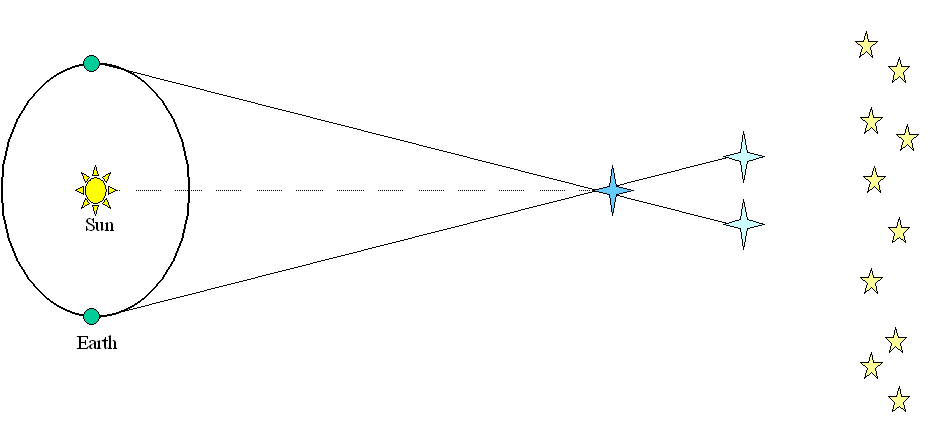A simple and easy way to show your students how parallax works!
Watch Video
Teachable Topics:
-
measuring distances to objects
(trigonometric parallax)
Theory:
Parallax is the phenomenon that makes objects in the sky appear to move relative to the background sky. Nearby objects have a much larger parallax than those far away. For example, if we observe a star that is closer to Earth than the other stars in the same field of view, that star's position on the sky will appear to shift relative to the background stars over the year. This apparent motion is actually due to the motion of the Earth around its orbit, causing the object to be viewed from different lines of sight (this concept is demonstrated in Figure 1).

Figure 1: The star appears to be in two different positions relative to the background stars when the Earth is at different positions in its orbit.
In this demonstration, the blackboard is used as a uniform backdrop with a red cardboard star taped to it. The red star can be assumed to represent any object or group of objects that act as a background reference point. The nearby star being observed is represented with a styrofoam ball hanging from an elevated bar. As the observer moves from side to side as shown in the video, the styrofoam ball will appear to be moving with respect to the red star in the background, when both are actually stationary.
Apparatus:
-
sytrofoam ball with nail to hang it from
-
string or fishing line
-
uniform backdrop (a large black board or dry erase white board works well)
-
background object (red cardboard star in this demonstration)
-
hanging apparatus
Procedure:
1. Hang the styrofoam ball from the hanging apparatus and ensure it is as high as the center of the blackboard. The hanging apparatus can be placed at a distance of about a meter from the blackboard.
2. Place your background object (a cut out cardboard star works!) on the blackboard at approximately the same height as the object being observed (the styrofoam ball in this case).
3. View the position of the styrofoam ball from about half a meter back. View it from one angle, say to the left of it and then slowly walk to the right side of the ball. Observe the relative positions of the styrofoam ball and the background star with your changing position.



